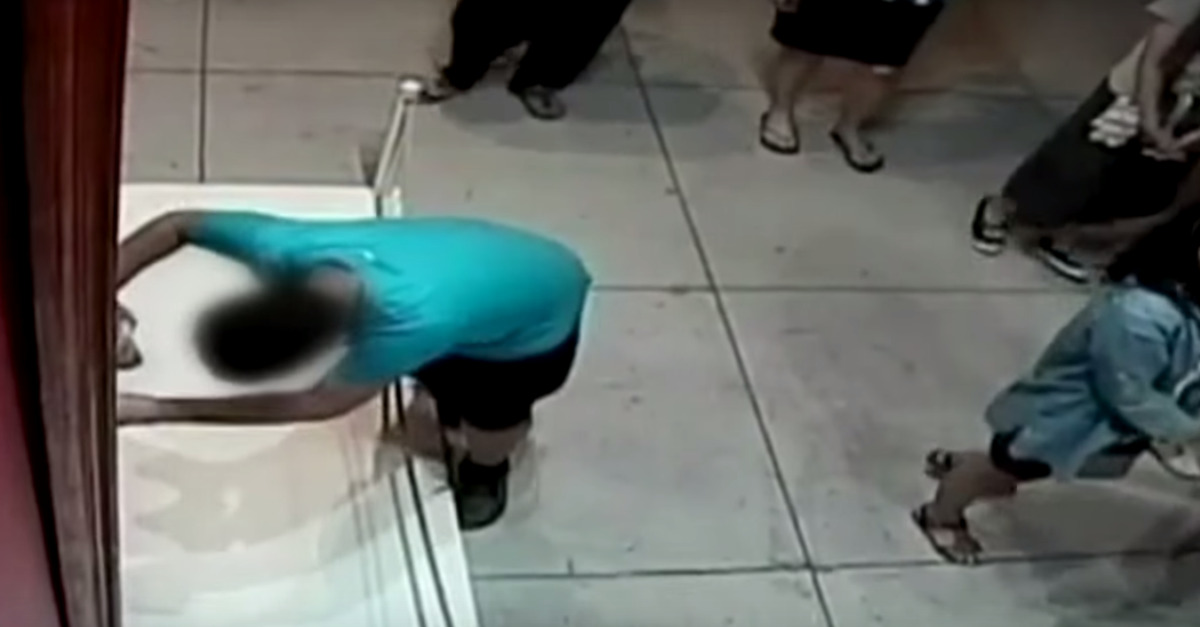
Snapshot is a weekly series that zooms in on a single photograph to explore the context of an image, the conditions it is created within and its wider cultural impact.
At first, it just looks like a screenshot of a classic YouTube clip; a child has tripped, fallen onto something and hilarity ensues. But no, this image, when accompanied by the news story that broke with it, is in fact the perfect intertwining of the art world and slapstick comedy. It also serves as a reminder that, as much as we try, we’re all still human.
In August 2015, at the Huashan 1914 Creative Park in Taiwan, a 12-year-old boy was walking around the museum when he lost his footing and fell into a painting. It just happened to be a 350-year-old still life called Flowers, by Italian baroque artist Paolo Porpora, valued at a fairly hefty $1.5m. A hole was gouged out of the bottom right-hand corner, which matched the shape of the soda can the boy was holding as he tried to break his fall.
“Art galleries and museums can be fairly intimidating spaces. They have often formed an excellent backdrop for a series of comedic moments”
Watching the clip in full proves that slapstick has a some place in the art gallery, but the stakes are much higher than your average “funniest home videos” moment. Seeing the fickle way the supposedly impenetrable safety rope caved upon impact is bad enough. But the boy’s reaction, as he looks to other museum goers for help, is hilarious in its disbelief and anguish. Fortunately, it was reported that the boy’s family were not asked to pay for the restoration costs, because the painting was insured. However, the work was “permanently damaged”.
It was one of those art news stories that permeated the mainstream because it felt so relatable. It resonates because art galleries and museums can be fairly intimidating spaces. They have often formed an excellent backdrop for a series of comedic moments, where the protagonist wreaks havoc in an elite environment. From Danny DeVito masquerading as a collector and declaring “bullshit” in It’s Always Sunny in Philadelphia, to Mr Bean damaging one of the America’s most beloved paintings, there is always a sense that the adoration of art can quickly slip in to farce.
The unfortunate incident in Taiwan was far from unique. In 2006 a man tripped on his shoelace in the Fitzwilliam Museum in Cambridge and smashed three 300-year-old Chinese vases; in 2010 a woman at the Metropolitan Museum of Art in New York fell into a Picasso artwork causing a sizeable, 15cm tear; and in 2017 Yayoi Kusama’s Infinity Mirrors exhibition at Washington DC’s Hirshorn had to be shuttered a week after opening because a keen visitor broke a glowing pumpkin sculpture while trying to get a selfie. Luckily for these individuals, there was no one there to film the carnage.
The act of accidentally breaking or damaging a precious item will always fill the average person with fear, not only due to the monetary and cultural cost, but because it somehow marks you out as unworthy or misplaced within a certain space. And no one wants to feel like they don’t belong.
Ultimately, the video evidence of this particular calamity demonstrates what a few misplaced seconds can do, but it also serves as a reminder that works of art are ultimately material objects, made by human hands, and occasionally destroyed by them.




